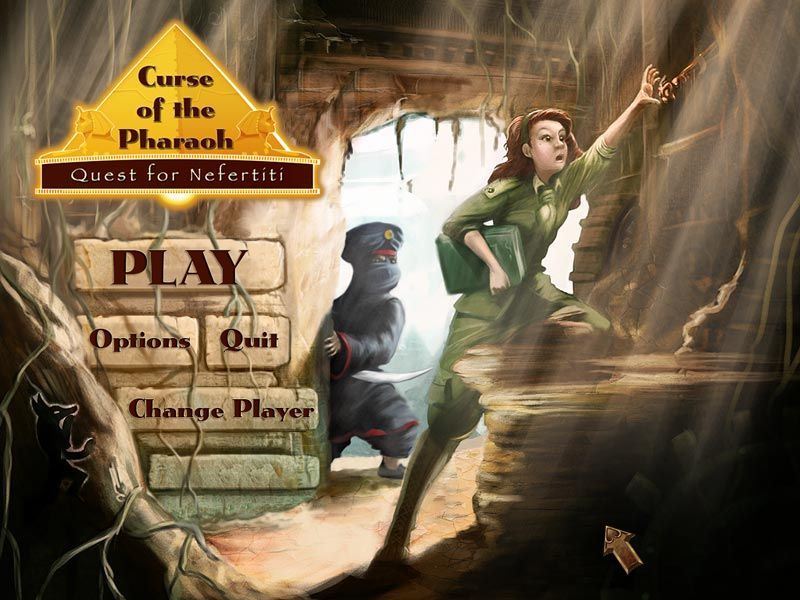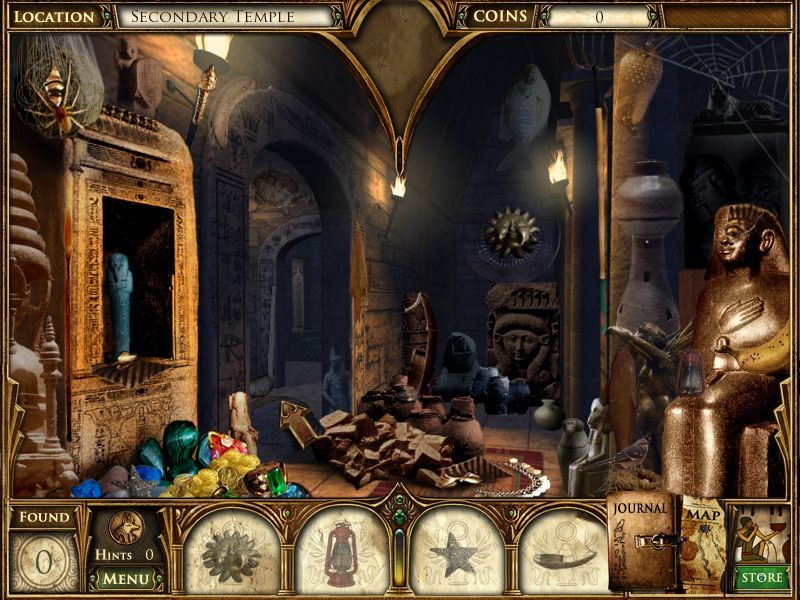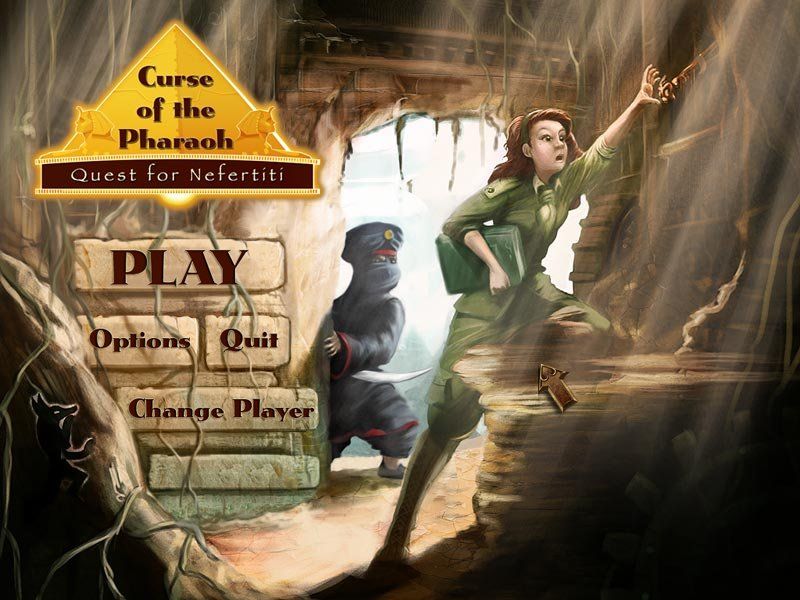Retro Replay Review
Gameplay
Curse of the Pharaoh: The Quest for Nefertiti revolves around a classic “spot-the-difference” mechanic presented with a split-screen display. Players are tasked with identifying subtle discrepancies between two nearly identical scenes—a broken vase here, an extra hieroglyph there—by simply clicking on the diverging elements. The challenge ramps up gradually, introducing more differences and tighter time limits, keeping the core gameplay engaging without ever feeling repetitive.
Complementing the main differences mechanic is an in-game economy based on collectible coins. Throughout each level, coins are discreetly embedded within the artwork. Accumulating these coins allows players to purchase gameplay enhancements at the store, ranging from extra hints to power-ups that briefly freeze the timer. Additionally, coins unlock a suite of mini-games—Simon Says, Whack-A-Mole, memory match and more—offering a delightful diversion and a fresh way to earn rewards.
To add depth, certain objects clicked during the main game are stashed in an inventory bar at the bottom of the screen. These items serve as keys for environmental puzzles: for instance, placing a hand crank on a wall-mounted lever mechanism opens new paths or lifts obstacles blocking progress. This fusion of hidden-object discovery and light puzzle-solving enriches the gameplay loop, encouraging players to look beyond mere differences and think strategically about item usage.
Graphics
The visual presentation of Curse of the Pharaoh is steeped in Egyptian ambiance, with richly detailed backdrops depicting sun-drenched temples, shadowy crypts, and ornate wall carvings. Each pair of scenes is carefully hand-painted to ensure differences are clear yet challenging to spot, fostering a satisfying balance between beauty and gameplay clarity. The color palette—earthy ochres, deep blues, and gold accents—helps immerse players in an archeological adventure.
Character design and UI elements are equally polished. A small explorer figure reliably pops up on occasion to offer hints in exchange for coins, and the cursor changes subtly when hovering over interactive spots. When wrong clicks occur in certain hidden-object stages, the screen darkens save for a spotlight around the cursor—an elegant way to punish mis-clicks without jarring graphical feedback. In moments of inactivity, subtle animations like flickering torches or drifting sand particles keep the scenes alive.
The mini-games, although varied in style, maintain visual cohesion with the main game. Simon Says glows with hieroglyphic panels, Whack-A-Mole replaces critters with scarab beetles, and memory match uses ancient symbols as cards. These interludes demonstrate a thoughtful art direction that unifies all gameplay elements under the central Egyptian theme.
Story
At its heart, Curse of the Pharaoh unfolds the legend of Queen Nefertiti and a lost amulet rumored to hold eternal power. Players assume the role of an intrepid archaeologist racing against a shadowy rival to piece together the scattered fragments of the pharaoh’s mask. Brief narrative vignettes between levels—delivered via parchment-style text panels—provide context, hint at looming dangers, and foreshadow surprising twists.
Dialogue is concise yet evocative, featuring pithy exchanges between the protagonist and a scholarly mentor, as well as taunting remarks from the unseen antagonist. These snippets heighten motivation without bogging down the gameplay; they’re ideally pitched for casual gamers who appreciate a storyline but don’t want lengthy cutscenes. The overarching plot neatly ties each spot-the-difference challenge to specific locales of Egypt, from bustling bazaars to hidden tomb corridors.
While the narrative doesn’t reinvent adventure storytelling, it delivers just enough intrigue to sustain engagement. Uncovering mask fragments or solving environmental puzzles advances the plot logically, making each new level feel like a meaningful step deeper into the mystery. For players who relish narrative-driven puzzles, the game strikes a comfortable middle ground.
Overall Experience
Curse of the Pharaoh: The Quest for Nefertiti offers a well-rounded package for fans of casual puzzle games and Egyptian lore alike. The steady progression of difficulty, combined with collectible coins and unlockable mini-games, ensures a blend of challenge and variety. The addition of inventory-based puzzles adds a welcome layer of interactivity that distinguishes this title from typical spot-the-difference fare.
Replay value comes from seeking perfect runs (no wrong clicks) and mastering the mini-games, as well as hunting for every hidden coin and character hint. The game’s moderate length—around 20 to 25 levels—avoids overstaying its welcome, yet it leaves room for occasional replays to improve one’s completion time and coin haul. Accessibility options, such as adjustable hint frequency, make it suitable for both beginners and seasoned puzzle enthusiasts.
Ultimately, Curse of the Pharaoh delivers a polished, immersive puzzle adventure that marries elegant presentation with satisfying gameplay loops. Whether you’re drawn by the allure of ancient Egypt or simply enjoy eye-sharpening spot-the-difference mechanics, this title is a worthy addition to any casual gamer’s library.
 Retro Replay Retro Replay gaming reviews, news, emulation, geek stuff and more!
Retro Replay Retro Replay gaming reviews, news, emulation, geek stuff and more!









Reviews
There are no reviews yet.